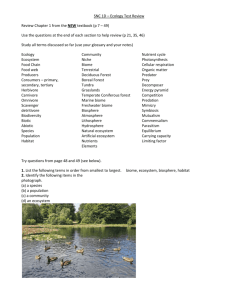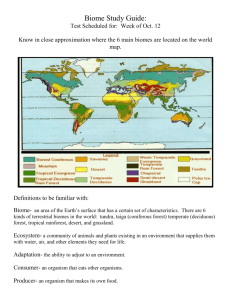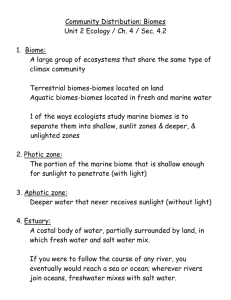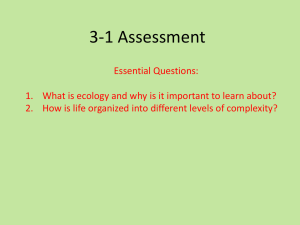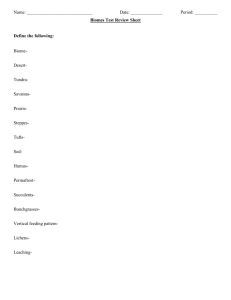Sci 7 – Unit 1 Test
advertisement
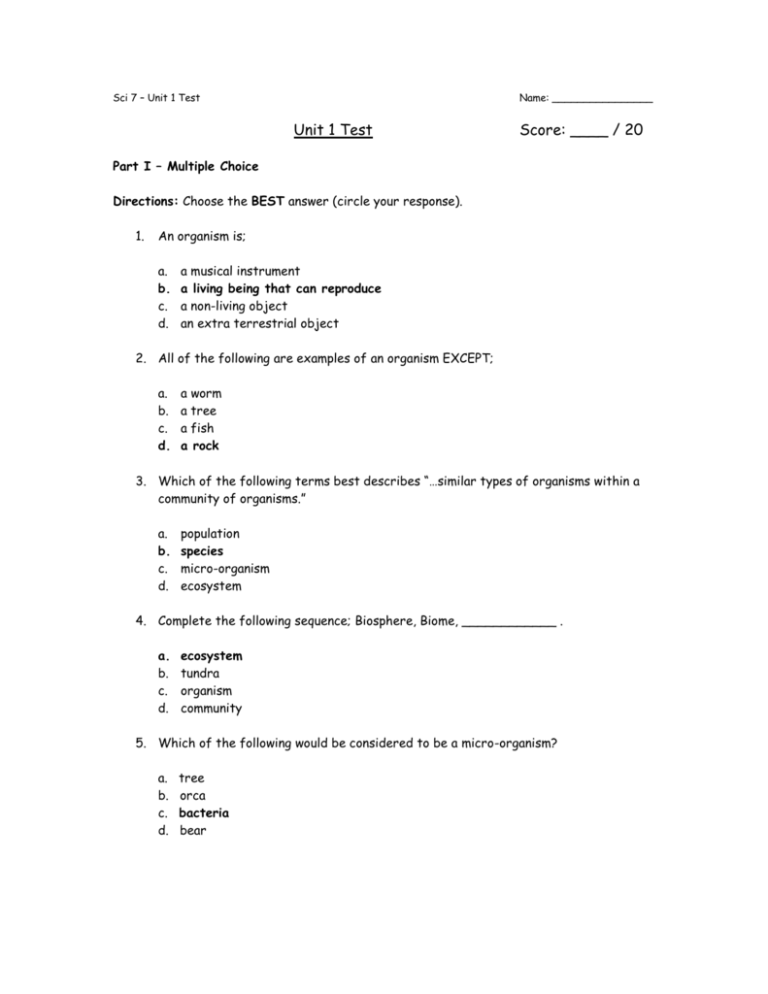
Sci 7 – Unit 1 Test Name: ________________ Unit 1 Test Score: ____ / 20 Part I – Multiple Choice Directions: Choose the BEST answer (circle your response). 1. An organism is; a. b. c. d. a musical instrument a living being that can reproduce a non-living object an extra terrestrial object 2. All of the following are examples of an organism EXCEPT; a. b. c. d. a worm a tree a fish a rock 3. Which of the following terms best describes “…similar types of organisms within a community of organisms.” a. b. c. d. population species micro-organism ecosystem 4. Complete the following sequence; Biosphere, Biome, ____________ . a. b. c. d. ecosystem tundra organism community 5. Which of the following would be considered to be a micro-organism? a. b. c. d. tree orca bacteria bear 6. Which of the following terms best describes a group that is made up of two or more populations of different species in an ecosystem. a. b. c. d. micro-organism community species ecosystem 7. ____________ trees are trees that stay green all year round. a. b. c. d. coniferous deciduous algae fruit 8. These are large regions of the Earth where temperature and precipitation are the same and where similar plants and animals are found. a. b. c. d. biosphere ecosystem micro-organisms biomes 9. A _______________ is the physical space where a certain species lives. a. b. c. d. consumer community population habitat 10. Which of the following terms best describes an organism that hunts another living thing for food? a. micro-organism b. prey c. predator d. gym teacher Part II – Matching Directions: Match the letter on the map with the correct biome; 11. The letter “A” represents the biome called; a. Tundra b. Polar Regions c. Rain Forest d. Coniferous Forest 12. The letter “B” represents the biome called; a. Tundra b. Polar Regions c. Rain Forest d. Coniferous Forest 13. The letter “C” represents the biome called; a.. b. c. d. Tundra Polar Regions Rain Forest Coniferous Forest 14. The letter “A” represents the biome called; a. Tundra b. Polar Regions c. Rain Forest d. Coniferous Forest Part III – Short Answers Directions: In the space provided, using complete sentences, answer the following questions. Each question is worth 2 marks based on the quality of your response and inclusion of details to support your answer. 15. In your own words, describe what a limiting factor is. Provide a specific example as to what a limiting factor may be. Answers may vary, but student should be able to express the idea that a limiting factor is any part of the non-living environment that determines whether or not an organism can survive. Examples may include physical barriers, sunlight, water, temperature or soil. Mark students on a ½ mark, 1 mark, 1 ½ mark, 2 mark scale based on their ability to answer the question and provide a specific example as to what a limiting factor is. 16. In your own words, describe the relationship between a predator and a prey and the nature of competition between animals. Provide a specific example of a predator and a prey. Answers may vary, but students should be able to express the idea that a predator and a prey are closely linked. Because the predator relies upon prey to live, if the population of the prey goes down, then the population of the predators will decline. Also, if the population of the prey increases, there is more food for the predators and their populations will increase. It is a balance. Specific examples of predators and prey will vary. Mark students on a ½ mark, 1 mark, 1 ½ mark, 2 mark scale based on their ability to answer the question and provide a specific example as to what a limiting factor is.

